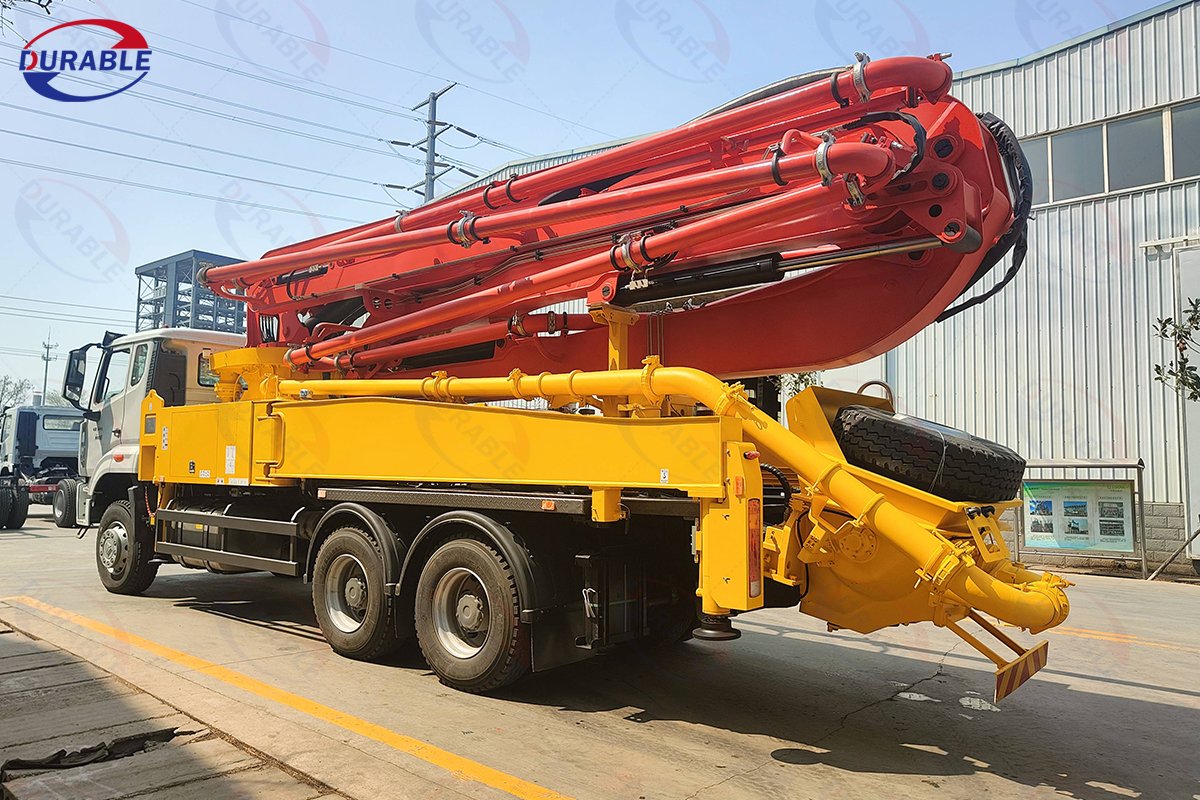Concrete Boom Pump
Max. concrete output:
50/80 m³/h
Power Type:
Diesel Engine
application:
Concrete pump truck, also known as “concrete boom pump”, is to install the concrete pump and hydraulic folding boom on the chassis of the car or trailer. The concrete is transported along the delivery pipe on the boom and finally reaches the pouring site through a 3-meter hose at the end.
Concrete boom pump is a very important part of modern building. It helps with many construction and infrastructure projects. A concrete boom pump, also called a truck-mounted concrete pump or a pumping truck, moves concrete. It moves concrete to high places. It also moves concrete to far places. This machine combines a concrete pump with a folding boom arm. All of this sits on a truck chassis. This makes it highly mobile. It also makes it very powerful. It is perfect for precise and fast concrete placement on your job site.
Table of Contents
- How Does a Concrete Boom Pump Work?
- What Are the Main Applications of Concrete Boom Pumps?
- Durable Concrete Boom Pump: Advanced Features and Benefits
- How to choose a suitable concrete boom pump?
- How to Operate a Boom Pump Safely and Efficiently?
- How to Maintain a Concrete Boom Pump?
- How Much Does a Concrete Boom Pump Cost?
How Does a Concrete Boom Pump Work?
A concrete boom pump is like a giant, mobile arm that moves concrete. It takes the liquid concrete from a mixer truck. Then it pushes that concrete through pipes mounted on a long, jointed arm. This arm can reach high up. It can also reach far across your building site. This makes it a highly effective tool for modern construction. It works quickly and precisely. It helps deliver concrete to places that are hard to reach. This avoids the need for many small hoses or buckets. This makes your work site safer and much faster. It is an all-in-one machine. It helps your team work smarter.
This machine integrates several key parts. First, it has a concrete pumping unit. This unit is built into the truck. Second, it has a foldable boom arm. This arm can extend and move. Third, it has a strong truck chassis. This whole setup makes a mobile and powerful unit. The main benefit of a boom pump is its ability to deliver concrete directly. It sends concrete to high points. It also sends concrete to distant points. It is very useful for places that are hard to access. This means you do not need to lay out many long hoses. This saves a lot of time. It also makes the job safer. An operator uses a wireless remote control. This control lets them precisely unfold the boom. It also lets them rotate the boom. They can swing the end hose. This places the concrete exactly where it needs to go. The pumping system inside works like other concrete pumps. It uses a piston-style pump. A hydraulic system powers pistons. These pistons move back and forth. An S-valve or gate valve helps with this action. It sucks in concrete. Then it pushes it out at high pressure. To make sure the pump is steady during work, it has strong hydraulic outriggers. These are usually X-shaped or R-shaped. They hold the truck firmly on the ground. This prevents it from tipping over.
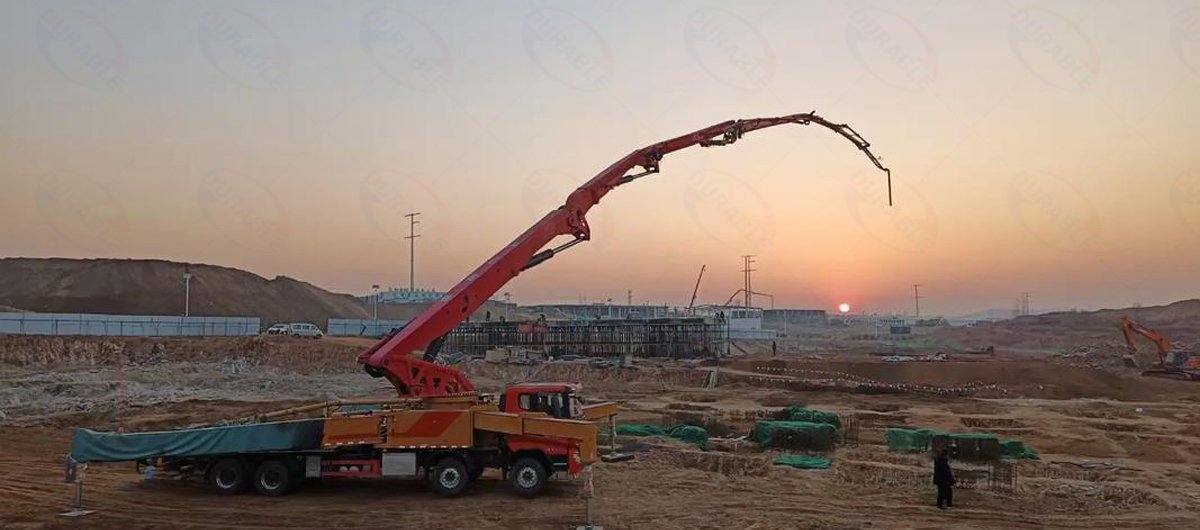
Key Operating Principles for You
- Integrated Design: Pump, boom, and truck are one unit. This makes it very mobile.
- High Reach: The boom can go high up or far away. It delivers concrete right where you need it.
- Precise Placement: You control the boom with a remote. This places concrete accurately.
- Stable Support: Strong outriggers keep the truck steady. This prevents it from tipping.
What Are the Main Applications of Concrete Boom Pumps?
Concrete boom pumps are essential for many types of construction. They are highly efficient. They are very precise. They have excellent pumping ability. They are a core tool for specific clients. They are crucial for tall buildings. They also help with large infrastructure projects. They are used for complex structures. These pumps bring great value to your business by speeding up work. They also lower labor costs. They improve safety on your job sites. They are needed where large amounts of concrete must be placed quickly.
These pumps are vital for specific B2B client groups. Large construction companies and general contractors use them for high-rise buildings. This includes pouring concrete for central cores, floor slabs, beams, and columns. They also use them for large housing projects. The pumps quickly cover big pouring areas. They are also vital for large span structures. This includes sports stadiums and exhibition centers. They provide precise and efficient concrete distribution. Infrastructure companies use them for big bridge projects. This includes pouring concrete for bridge piers, decks, and cable towers. They are also used in airport construction. This includes runways, aprons, and terminal buildings. Water conservancy and hydropower projects also use them. This includes large dams, reservoirs, and power stations. Concrete mixing plants and ready-mix concrete companies use them too. These pumps are their main equipment for providing concrete pumping services. They offer a full solution from production to pouring. Mining companies and cement producers also find them useful. They use boom pumps for expanding their own plants. They also use them for building new infrastructure. They are good for special concrete structures. Equipment rental companies also value them. Boom pumps are high-value equipment. They are always in high demand in the rental market. This brings good returns for rental companies. Our pumps are designed to meet these diverse needs. They give you a reliable solution for every project.
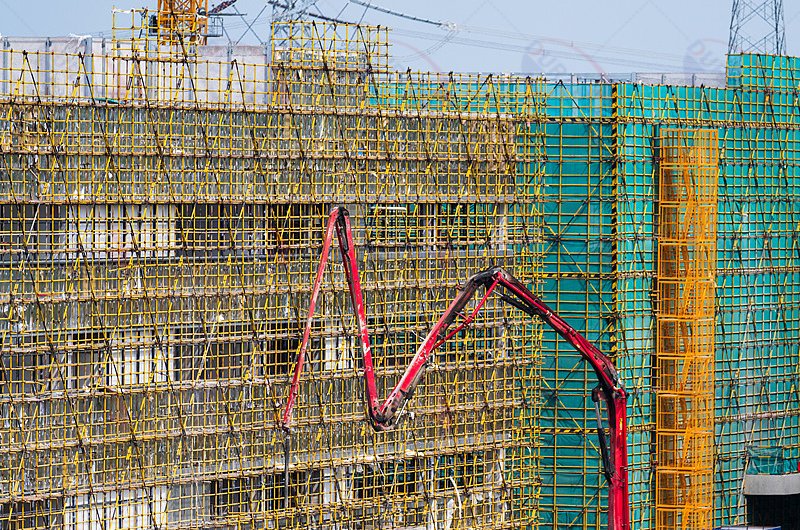


Your Project Solutions
- High-Rise Buildings: Quickly pump concrete to top floors. This saves time and effort.
- Large Infrastructure: Perfect for bridges, dams, and airports. They handle big concrete volumes.
- Complex Structures: Provide precise concrete placement. This helps for unique building shapes.
- Concrete Services: Essential for ready-mix concrete companies. They offer complete solutions.
Durable Concrete Boom Pump: Advanced Features and Benefits
With fifty years in heavy machinery design, we offer concrete boom pumps with outstanding features. Our products have strong chassis. They use high-strength steel booms. They also have advanced pumping systems. These systems use world-class hydraulic components. They also feature wear-resistant parts. This ensures excellent performance. It gives you long-term reliability. Our pumps are built to last. They perform well under tough conditions. They bring great value to your construction business.
Our boom pumps are built on strong foundations. We can match them with well-known heavy truck chassis brands. This depends on your needs and local rules. This gives them powerful carrying capacity. It also ensures stable driving. The boom arm is made from very high-strength, low-alloy steel. This includes steel like the WELDOX series. We use advanced finite element analysis (FEM). This helps us optimize the boom’s design. This makes the boom light. It also makes it very strong. It resists fatigue well. We use robotic automatic welding. This ensures strong and consistent welds. This makes the boom last longer. Our pumps have world-class hydraulic systems. We use top brands like German Rexroth for the main oil pump and high-quality Italian oil hoses. These provide stable and powerful output. They give precise control over pumping pressure and flow. We have optimized our S-valve or gate valve. The valve body is made of special wear-resistant cast steel. It switches smoothly. It is very resistant to wear. It does not easily get blocked. It works with different concrete consistencies. It also handles various aggregate sizes. Wear parts are crucial. These include the spectacle plate, cutting ring, conveying cylinder, piston head, and delivery pipes. We make them from high-chrome alloy, special ceramic composite materials, or high wear-resistant steel. They get special heat treatment. This greatly extends their life. This lowers your operating costs. We optimize the pumping stroke and frequency. This ensures concrete moves smoothly and continuously. It reduces pipe blockages and shocks. Our systems are designed for high efficiency. They are easy to maintain. They improve your project flow.
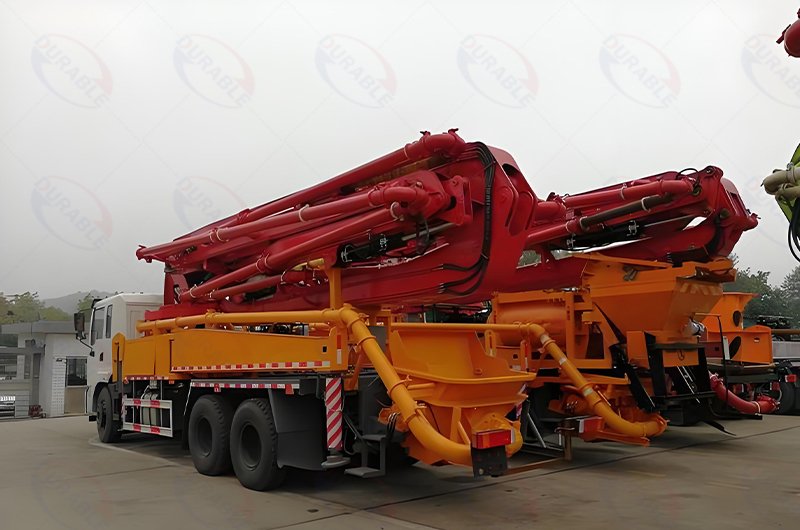
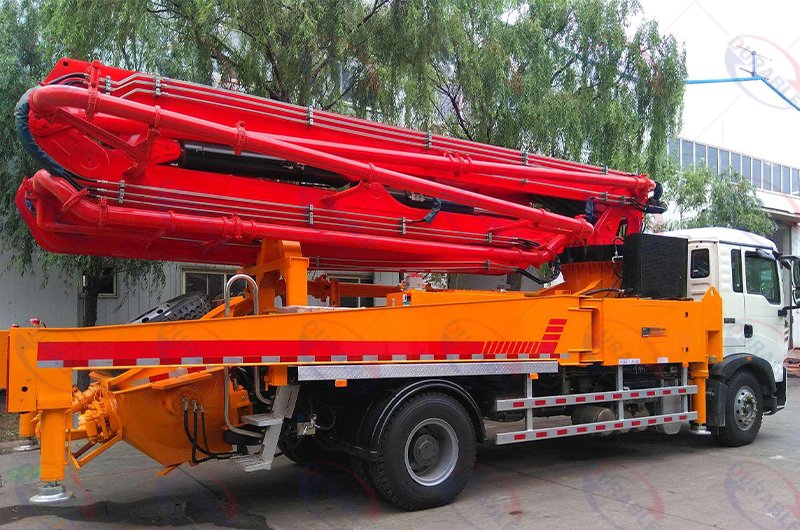
Your Key Advantages
| Feature Area | Durable’s Approach | Your Benefit |
|---|---|---|
| Structure | High-strength steel, robotic welding | Lighter boom, longer life, more reliable |
| Hydraulics | World-class pumps (Rexroth, Kawasaki) | Stable power, precise control, efficient pumping |
| Wear Parts | Special alloys, heat-treated | Longer lifespan, lower maintenance costs |
| Pumping Flow | Optimized stroke and frequency | Smooth, continuous concrete delivery, less blocking |
Smart Control and Safety of Durable Boom Pumps
Our concrete boom pumps come with intelligent control systems. These systems ensure precise concrete placement. They also have comprehensive safety features. This helps you work efficiently and safely. Our design includes multi-section booms. It also has full-proportional remote controls. This gives you exact command over the pumping process.
Our boom pumps offer many boom section combinations. You can choose from 3, 4, 5, or even 6 sections. They also come in different lengths. These range from 25 meters to over 60 meters. This meets your varied height and reach needs. We use high-performance wireless remote controls. These allow for stepless speed control of the boom. This means smooth and precise operation. It avoids sudden movements. We also include smart anti-vibration technology. This has a boom damping system. It also has a vibration reduction device for the end hose. This greatly reduces shaking at the end of the boom during pumping. This improves placement accuracy. It also makes the job safer. We offer one-button operations. These include one-button unfolding and retraction of outriggers. They also include one-button unfolding and folding of the boom. This makes operation simple and efficient for you. Safety is our top priority. We include outrigger interlock protection. The boom cannot operate if the outriggers are not fully extended. This prevents mistakes. We also have boom limit protection. The boom stops automatically when it reaches its limits. This prevents damage. Our pumps have anti-rollover warning systems. They check the truck’s tilt angle in real-time. They also check the pumping load. If it goes beyond safe limits, it alerts you. It might stop the pump automatically. We put emergency stop buttons in many places. This keeps operators and equipment safe in urgent situations. Our pumps also have bright LED work lights. This ensures safe and efficient work at night. Our boom pumps are designed for maximum efficiency. They use high-performance, low-emission diesel engines. They have smart power control systems. This maximizes fuel efficiency. They are designed for easy maintenance. They have modular designs. This makes diagnosis and part replacement easy. They also have an automatic centralized lubrication system. This lubricates key parts. It reduces manual work. It makes parts last longer. A fault diagnosis system shows error codes in real-time. It also shows operating status. This helps you quickly find and fix problems.
Smart Features for Your Project
Precision Remote Control: Adjust boom smoothly. No sudden movements.
- Anti-Vibration System: Less boom shake. More accurate pouring.
- One-Button Operations: Quick setup. Easy folding.
- Comprehensive Safety: Interlocks, warnings, emergency stops. Your team is safe.
- Efficient Power: Save fuel. Reduce emissions.
How to choose a suitable concrete boom pump?
Choosing the right concrete boom pump means matching its features to your project’s needs. You must consider boom length, pumping displacement, and pumping pressure. These factors directly affect your project’s efficiency. They also impact your costs. A well-matched pump saves you time. It saves you money. It also helps you meet project deadlines.
First, consider the boom length. This is how far the boom can reach. For high-rise buildings, you need a long boom. For example, a 60-meter boom reaches many floors. For smaller projects or tight spaces, a shorter boom, like 30 or 40 meters, is better. It is more flexible. It is easier to set up. Think about the highest point of your pour. Think about the farthest point from the pump. Choose a boom that covers all your work areas. Second, think about pumping displacement. This is the volume of concrete the pump can move per hour. For large projects, like big bridges or dams, you need high displacement. This means a pump that can move 80-90 cubic meters per hour or more. For smaller jobs, like a single house foundation, a 40-50 cubic meters per hour pump might be enough. Higher displacement means faster concrete pouring. This speeds up your project. But a higher displacement pump often costs more to buy and run. Match the pump’s output to your project volume. This prevents delays. It also prevents wasted power. Third, consider pumping pressure. This is how hard the pump pushes the concrete. For high-rise buildings or very long horizontal distances, you need high pumping pressure. This pushes concrete through long pipes without issues. For ground-level pours, lower pressure might be fine. High pressure is needed for stiff concrete mixes or mixes with large aggregates. Our pumps offer various pressures. They range from 12 MPa to 20 MPa. This covers most project needs. Selecting the correct specifications ensures your concrete pumping solutions are efficient. This also ensures they are cost-effective for your specific construction demands.
Technical Data:
Concrete boom truck 22m-38m:
| Parameter | TMBP22 | TMBP25 | TMBP30 | TMBP33 | TMBP38 | ||
| Whole truck | Drive way | 4×2 | 4×2 | 4×2 | 4×2 | 4×2 | |
| Engine | Yuchai | Yuchai | Yuchai | Yuchai | Man | ||
| Output power/speed (kw/rpm) | 147/2000 | 147/2000 | 177/2000 | 177/2300 | 228/2300 | ||
| Emission standard | Euro V | Euro V | Euro V | Euro V | Euro V | ||
| Tire size | 9.00R20 16PR | 9.00R20 16PR | 11.00R20 16PR | 11.00R20 | 12.00R20 | ||
| Arm & leg | Vertical height (m) | 21.9 | 25.5 | 29.7 | 33 | 38 | |
| Horizontal length (m) | 18.1 | 21.7 | 25.9 | 29.5 | 33.2 | ||
| Vertical depth (m) | 15.5 | 19 | 22 | ||||
| Fold type | M (three arms) | M (four arms) | M (four arms) | 5RZ | 5RZ | ||
| Rotary angle (°) | ±360 | ±360 | ±360 | ±360 | ±360 | ||
| Pumping system | Theoretical pumping pressure (MPa) | Low pressure | 8.5 | 8.5 | 8.5 | 8 | 8 |
| High pressure | 10.5 | 10.5 | 10.5 | 12 | 12 | ||
| Distribution valve | S valve | S valve | S valve | S valve | S valve | ||
| Delivery cylinder inner diameter/stroke (mm) | 200/1200 | 200/1200 | 230/1450 | 230/1600 | 230/1600 | ||
| Hopper capacity (m3) | 0.65 | 0.65 | 0.65 | 0.5 | 0.5 | ||
| Feeding height (mm) | 1450 | 1450 | 1450 | 1450 | 1450 | ||
| Pipe diameter (mm) | 125 | 125 | 125 | 125 | 125 | ||
| Maximum aggregate size (mm) | 40 | 40 | 40 | 40 | 40 | ||
Concrete boom truck 38m-58m:
| Parameter | TMBP38 | TMBP42 | TMBP47 | TMBP50 | TMBP58 | ||
| Whole truck | Drive way | 6×4 | 6×4 | 6×4 | 6×4 | 8×4 | |
| Engine | Yuchai | Yuchai | Yuchai | Yuchai | MC11.44-50 | ||
| Output power/speed (kw/rpm) | 243/2100 | 243/2100 | 243/2100 | 243/2100 | 327/1900 | ||
| Emission standard | Euro V | Euro V | Euro V | Euro V | Euro V | ||
| Tire size | 11.00R20 | 11.00R20 | 11.00R20 | 11.00R20 | 385/65R22 5/315/80R22.5 | ||
| Arm & leg | Vertical height (m) | 38 | 40.1 | 47 | 50 | 57.6 | |
| Horizontal length (m) | 34.1 | 36 | 42 | 46 | 52 | ||
| Vertical depth (m) | 22.8 | 23.6 | 29.4 | 36.2 | 38 | ||
| Fold type | 5RZ | 5RZ | 5RZ | 6RZ | 6RZ | ||
| Rotary angle (°) | ±360 | ±360 | ±360 | ±360 | ±360 | ||
| Pumping system | Theoretical pumping pressure (MPa) | Low pressure | 8 | 8 | 8 | 8 | 8.5 |
| High pressure | 12 | 12 | 12 | 12 | 12 | ||
| Distribution valve | S valve | S valve | S valve | S valve | S valve | ||
| Delivery cylinder inner diameter/stroke (mm) | 230/1600 | 230/1650 | 260/1800 | 260/1600 | 260/2200 | ||
| Hopper capacity (m3) | 0.5 | 0.5 | 0.6 | 0.6 | 0.6 | ||
| Feeding height (mm) | 1450 | 1450 | 1450 | 1450 | 1500 | ||
| Pipe diameter (mm) | 125 | 125 | 125 | 125 | 125 | ||
| Maximum aggregate size (mm) | 40 | 40 | 40 | 40 | 40 | ||
Smart Tips for Your Selection
- Assess your project scope: Map out your highest, farthest, and largest volume pours.
- Consider concrete type: Stiffer mixes or larger aggregates need more pumping power.
- Balance cost and efficiency: A larger pump is faster, but sometimes a smaller, more flexible one saves money on less frequent large jobs.
How to Operate a Boom Pump Safely and Efficiently?
Operating a concrete boom pump requires proper training and strict safety practices. Efficient operation boosts your project speed. Safe operation protects your team and equipment. It is important to follow standard procedures. Also, always use the pump’s safety features.
First, prepare the site. Make sure the ground is level and firm enough to support the pump’s weight. The outriggers must be fully extended. They must be firmly placed on stable pads. This prevents tipping. Second, check the pump. Before starting, inspect all parts. Look at the pipes, clamps, and boom sections. Make sure there are no leaks or damage. Check the oil levels. Also, check the remote control battery. Third, communicate clearly. The pump operator must communicate with the concrete mixer truck driver. They also need to talk to the concrete placement crew. Use clear hand signals or radios. This ensures everyone knows what is happening. Fourth, control the boom smoothly. Do not make sudden movements. Extend and retract the boom slowly. This prevents sudden shocks. It also keeps the boom stable. Use the anti-vibration features. This helps for precise pouring. Fifth, monitor the pumping process. Watch the concrete flow. Listen for unusual noises. Check for any blockages. Our pumps have fault diagnosis systems. These show error codes. This helps you fix problems fast. Sixth, clean the pump thoroughly. After each use, flush the pumping system. Remove all concrete residue. This prevents hardening. This also keeps the pipes clear for the next job. This helps prevent future boom pump maintenance issues. Training your operators is key. They should know all controls. They should understand emergency procedures. Regular safety meetings also help reinforce good habits. By following these steps, you ensure safe and efficient concrete pumping on every project.
Safety and Efficiency Tips for You
- Site Check: Always ensure stable ground and fully extended outriggers.
- Pre-Op Inspection: Check all parts, especially pipes and clamps, for damage.
- Clear Communication: Use signals or radios to coordinate with the mixer and crew.
- Smooth Boom Control: Avoid sudden moves. Extend and retract slowly.
- Regular Cleaning: Flush the pump after each use to prevent concrete hardening.
How to Maintain a Concrete Boom Pump?
Proper maintenance is vital for the long life and peak performance of your concrete boom pump. It lowers your operating costs. It also reduces unexpected breakdowns. Regular checks and timely replacements are essential. Our pumps are designed for easy maintenance. This helps you keep them in top condition.
First, daily checks are important. Before each shift, inspect the whole pump. Look for leaks in the hydraulic system. Check the oil levels. Look at the wear parts like the S-valve, spectacle plate, and cutting ring. Make sure all safety devices work. This includes emergency stop buttons and limit switches. Second, lubrication. Our pumps have an automatic lubrication system. Make sure it works. Keep the grease reservoirs full. This system feeds grease to key moving parts. It reduces friction. This prevents early wear. Third, cleaning after use. This is very important. Flush the entire pumping system thoroughly. Use water and cleaning balls. This prevents concrete from hardening inside the pipes and components. Hardened concrete can cause severe blockages and damage. Fourth, regular wear part replacement. The spectacle plate, cutting ring, and conveying cylinder are high-wear items. They are made from special, highly wear-resistant materials. They still need regular inspection and replacement. Follow the manufacturer’s recommended intervals. Replacing them on time prevents more costly damage to other parts. Fifth, hydraulic system care. Regularly check the hydraulic oil quality and level. Change filters as recommended. A clean hydraulic system ensures smooth power transfer. It also extends the life of hydraulic components. Our pumps have strong cooling systems. They combine air and water cooling. This keeps hydraulic oil at the right temperature. This is key for stable operation during long shifts. By following these steps, you can ensure your boom pump maintenance is effective. This means your machine will run reliably for many years.
Your Maintenance Checklist
- Daily Inspections: Look for leaks, check oil, test safety features.
- Automatic Lubrication: Ensure system works. Keep grease full.
- Thorough Cleaning: Flush concrete from pipes and components after every use.
- Wear Part Management: Inspect and replace high-wear parts on time.
- Hydraulic Health: Check oil quality, levels, and change filters regularly.
How Much Does a Concrete Boom Pump Cost?
The cost of a concrete boom pump varies widely. It depends on the boom length, pumping capacity, and the brand. It also depends on the truck chassis it sits on. Generally, prices can range from hundreds of thousands to over a million US dollars. For B2B clients, deciding whether to buy or rent a concrete boom pump needs careful thought. This often depends on how often you will use it and your long-term plans.
If your company has steady and frequent construction projects, buying a concrete boom pump often gives you a better return on your investment. Owning the machine means it is always available for you. You will not worry about rental company availability. You will not worry about rising rental costs. This saves valuable project time. Our pumps are built to last. They have a long service life. This means lower long-term ownership costs for you. You also build equity by owning the machine. Consider the labor savings. A boom pump greatly reduces manual labor for moving concrete. It also lowers equipment transport costs because it is very mobile. These savings add up over many projects. They improve your overall profit margin. For large construction companies or those offering concrete pumping solutions as a service, buying is usually more cost-effective over time. If your projects are occasional or very short-term, renting might seem like a good option. However, continuous rental fees can quickly add up and exceed the purchase cost. We suggest you carefully look at your average project frequency and duration. This will help you decide if buying one of our reliable concrete boom pumps brings the best return on investment for your business. You can ask us for a detailed quote. This will help you plan your investment better.
Your Investment Decision Factors
| Factor | Buying Durable Boom Pump | Renting a Boom Pump | Your Advantage |
|---|---|---|---|
| Upfront Cost | Higher initial investment | Lower initial cost per project | Long-term asset, builds company equity |
| Availability | Always ready for your projects | Depends on rental fleet availability | No project delays, immediate access |
| Maintenance | Your responsibility, with our support | Rental company usually handles it | More control over machine condition and uptime |
| Long-Term Cost | Lower overall cost after initial period | Can add up quickly, no asset building | Significant savings, increased profit margin |
| Asset Value | Increases your company’s asset base | No asset ownership | Enhances your company’s financial strength |
 Durable Machinery
Durable Machinery
